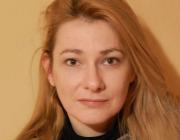Citation:
Abstract:
In core ADE3-23 collected in the Libyan Sea, the nannofossil species Coccolithus pelagicus, Coronosphaera spp., Helicosphaera spp., Syracosphaera spp., Calcidiscus spp., small Gephyrocapsa spp., and the planktonic foraminifers Globigerina bulloides, Neogloboquadrina pachyderma, Globorotalia scitula, Turborotalita quinqueloba and Neogloboquadrina dutertrei prevail in sapropel S6 (midpoint at 172 ka B.P.), indicative of cold and highly productive surface conditions. Warm and highly stratified water-column conditions are recorded by the characteristic assemblage of Globigerinoides ruber, Globoturborotalita rubescens, Florisphaera profunda, Rhabdosphaera spp. during the sapropel S5 depositional interval (midpoint at 124 ka B.P.). Compared with S5, Globigerinita glutinata, Globorotalia inflata, Globigerinella siphonifera, Globorotalia truncatulinoides and the calcareous nannofossil Emiliania huxleyi characterise less stratified conditions within sapropel S1 (midpoint at 8.5 ka B.P.). Multivariate statistical analyses of calcareous nannofossil and planktonic foraminifers in core ADE3-23 identify planktonic assemblages which typify sapropels S6, S5 and S1 in the Libyan Sea. A warmer interval is recognised in the middle part of the cold S6, and can be
associated with an influx of less saline waters and the occurrence of a faint, temporary deep chlorophyll maximum. Evidence for enhanced surface productivity and breakdown of stratification is observed in the middle–upper part of the warm S5, associated with climatic deterioration. Moreover, an increase in surface productivity in the upper S1 implies weak stratification. Our combined calcareous nannofossil and planktonic foraminiferal data add to the evidence that climate variability was more pronounced than commonly considered to date for all the three studied Eastern Mediterranean sapropel depositional intervals.

